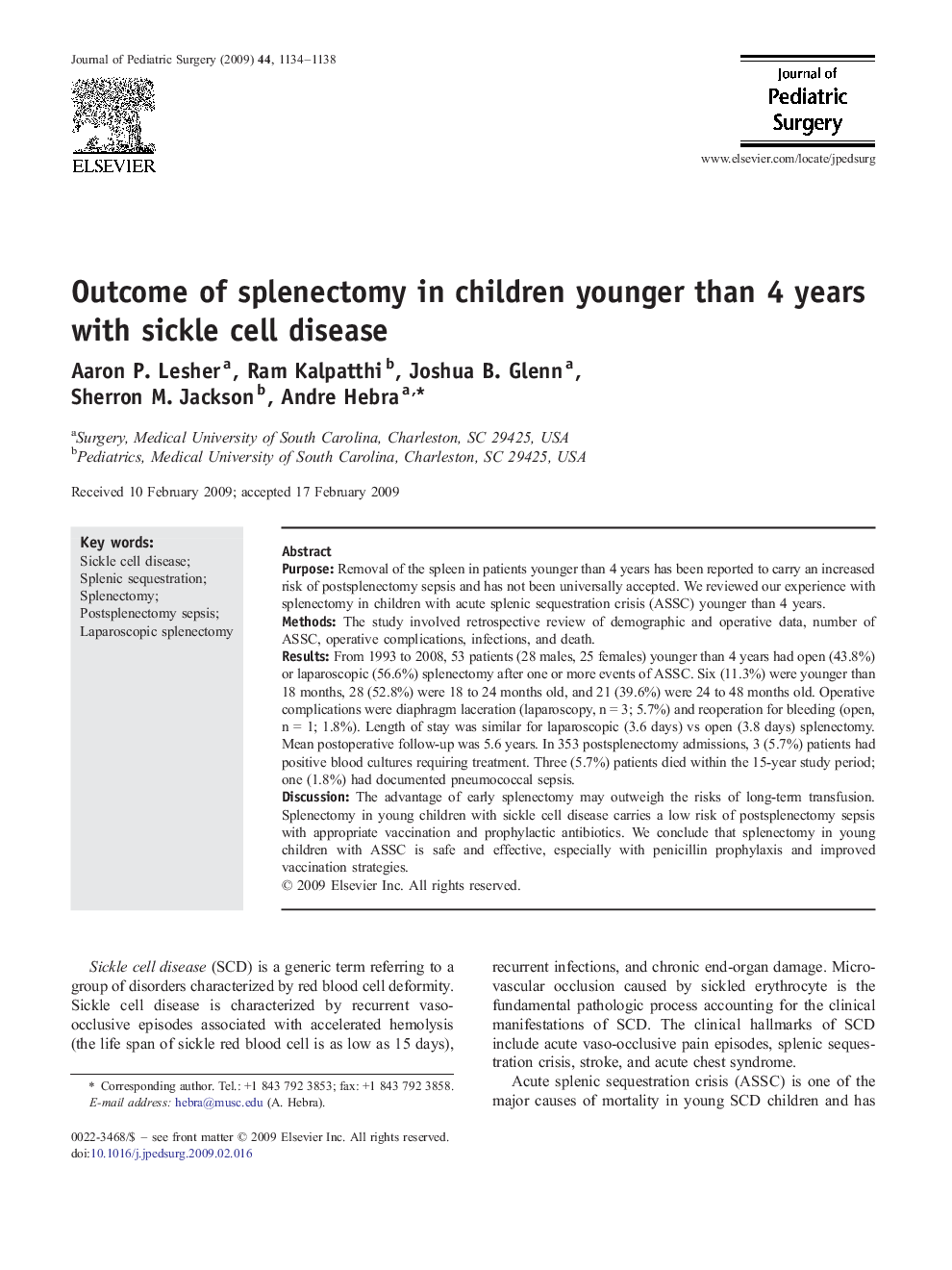| Article ID | Journal | Published Year | Pages | File Type |
|---|---|---|---|---|
| 4159477 | Journal of Pediatric Surgery | 2009 | 5 Pages |
PurposeRemoval of the spleen in patients younger than 4 years has been reported to carry an increased risk of postsplenectomy sepsis and has not been universally accepted. We reviewed our experience with splenectomy in children with acute splenic sequestration crisis (ASSC) younger than 4 years.MethodsThe study involved retrospective review of demographic and operative data, number of ASSC, operative complications, infections, and death.ResultsFrom 1993 to 2008, 53 patients (28 males, 25 females) younger than 4 years had open (43.8%) or laparoscopic (56.6%) splenectomy after one or more events of ASSC. Six (11.3%) were younger than 18 months, 28 (52.8%) were 18 to 24 months old, and 21 (39.6%) were 24 to 48 months old. Operative complications were diaphragm laceration (laparoscopy, n = 3; 5.7%) and reoperation for bleeding (open, n = 1; 1.8%). Length of stay was similar for laparoscopic (3.6 days) vs open (3.8 days) splenectomy. Mean postoperative follow-up was 5.6 years. In 353 postsplenectomy admissions, 3 (5.7%) patients had positive blood cultures requiring treatment. Three (5.7%) patients died within the 15-year study period; one (1.8%) had documented pneumococcal sepsis.DiscussionThe advantage of early splenectomy may outweigh the risks of long-term transfusion. Splenectomy in young children with sickle cell disease carries a low risk of postsplenectomy sepsis with appropriate vaccination and prophylactic antibiotics. We conclude that splenectomy in young children with ASSC is safe and effective, especially with penicillin prophylaxis and improved vaccination strategies.
